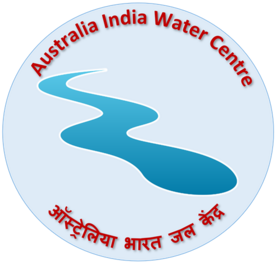
Name: Shive Prakash Rai Highest qualification and awarding university Ph. D., Kumaun University, Nainital Designation Associate Professor Employer Banaras Hindu University, Varanasi Contact details: Email: WhatsApp number/Mobile number Sprai1966roorkee@gmail.com; shive.rai@bhu.ac.in +91-9411100367 Home page link on your employer web site if available Key areas of interest Application of environmental isotope and other conventional tools to understand the hydrological processes in head water catchment of Himalayas, groundwater dynamics in multi-aquifer system of Indo-gangetic plain and hard rock (i.e., Spring hydrology), lake hydrodynamics, identification of source of precipitation etc. Paired watershed study for assessment of impact of deforestation and reforestation on water yield and soil erosion. Surface and groundwater management. Web link for personal profile Google Scholar https://scholar.google.com/citations?user=I3IReeAAAAAJ&hl=en
Brief career profile
S P Rai is working as Associate Professor in Geology Department, Banaras Hindu University, Varanasi. Before to joining at BHU, he was scientist at the National Institute of Hydrology (NIH), Roorkee. He has gained research experience of more than 22 years in area of Isotope Hydrology. He has more than 160 publications to his name, including over 60 articles in peer-reviewed, international and national journals. He has worked as Team Leader as well as Deputy Team leader in various multi-disciplinary projects funded through International and national organisations. He was part of Expert Mission of International Atomic Energy Agency (IAEA), Vienna, Austria to provide training on application of isotope in groundwater in two countries i.e., Nepal and Malayasia.
Research projects completed or on-going
-
The structure and dynamics of groundwater systems in northwestern India under past, present and future climates, funded by MOES, Govt. of India, under UK- India Collaborative programme on Changing Water Cycle” (2012-2016), (Four Institute from India and two Institute from UK side participated in this project); Completed PI from NIH, (Project cost INR 20.01 million)
-
Assessment of baseflow and its impact on water quality in part of Satluj River in India using environmental isotope and age dating techniques, funded by IAEA, under CRP (2012-2015) as Chief Scientific Investigator. Completed, P.I. (Project cost Euro 15.00 thousand).
-
The use of environmental isotopes to assess sustainability of intensively exploited aquifer systems along river Beas, Punjab, India, funded by IAEA, under CRP (2012- 2015), Co-Investigator. Complete, Co.P.I. (Project cost Euro 15.00 thousand).
Key publications
-
Shive Prakash Rai, Dharmaveer Singh, Noble Jacob, Y.S. Rawat, Manohar Arora, BhishmKumar (2019) Identifying contribution of snowmelt and glacier melt to the Bhagirathi River (Upper Ganga) near snout of the Gangotri Glacier using environmental isotopes, CATENA, 173, 339-351,ISSN 0341-8162, https://doi.org/10.1016/j.catena.2018.10.031.
-
Suneel Kumar Joshi, Shive Prakash Rai, Rajiv Sinha, Sanjeev Gupta, Alexander Logan Densmore, Yadhvir Singh Rawat, Shashank Shekhar (2018) Tracing groundwater recharge sources in the northwestern Indian alluvial aquifer using water isotopes (δ18O, δ2H and 3H), Journal of Hydrology, 559, 835-847, ISSN 0022-1694,https://doi.org/10.1016/j.jhydrol.2018.02.056.
-
Kumar, B., Rai, S.P., Kumar, U.S., Verma, S.K., Garg, P., Kumar, S.V., Jaiswal, R., Purendra, B.K., Kumar, S.R. and Pande, N.G., 2010. Isotopic characteristics of Indian precipitation, Water Resources Research, 46(12).
-
Rai, S. P., Purushothaman, P., Kumar, B. et al. (2014) Stable isotopic composition of precipitation in the River Bhagirathi Basin and identification of source vapour. Environ Earth Sci, 71, 4835–4847 (2014). https://doi.org/10.1007/s12665-013-2875-0
-
Rai, S. P., Thayyen, R.J., Purushothaman, P. et al. (2016) Isotopic characteristics of cryospheric waters in parts of Western Himalayas, India. Environ Earth Sci, 75, 600 . https://doi.org/10.1007/s12665-016-5417-8
